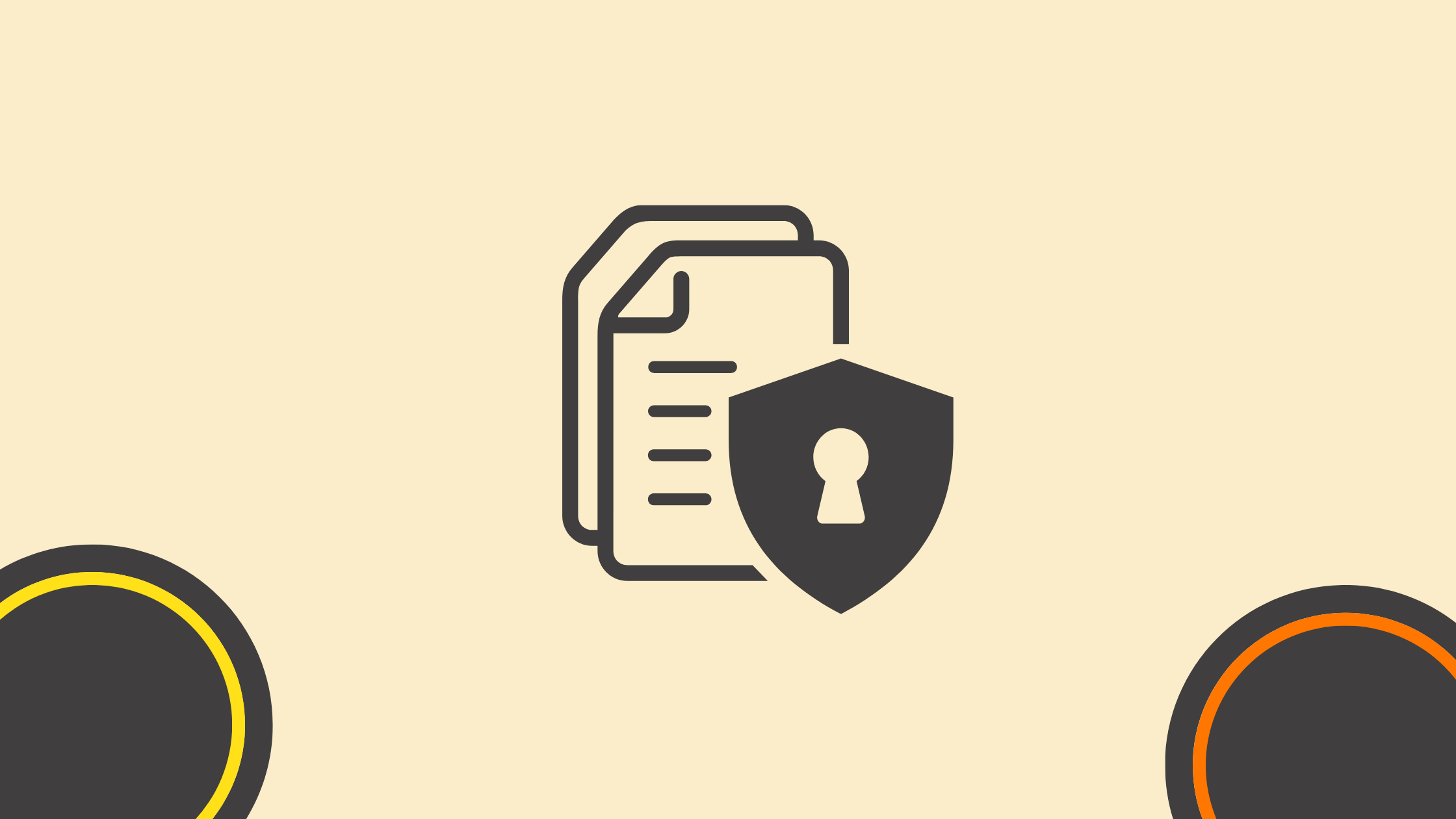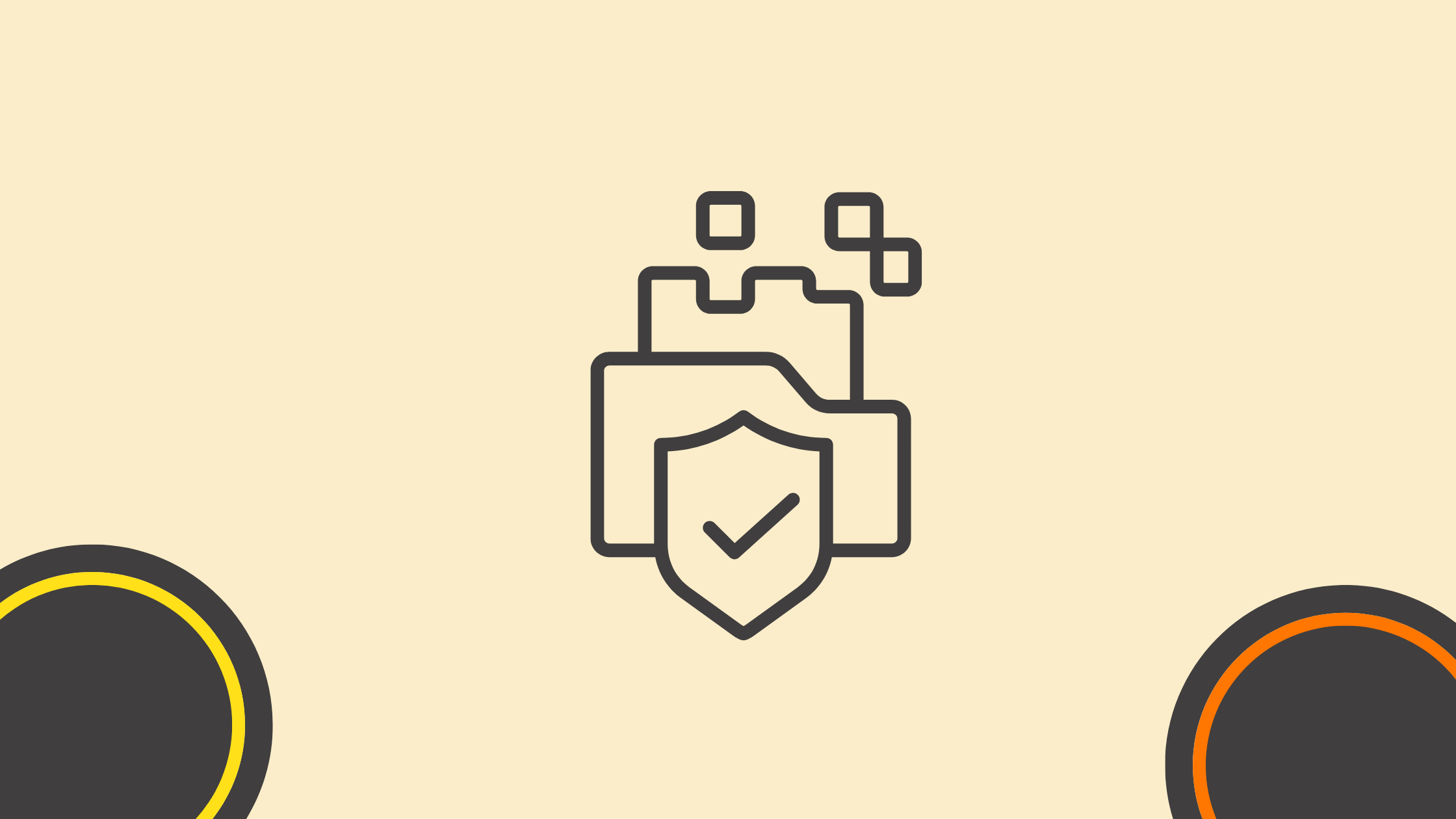Avoid Data Loss in Google Workspace: Backup, DLP & Ransomware Protection Guide

Storing your files in Google Workspace feels safe. Everything is in the cloud, auto-saved, highly available and protected by Google’s infrastructure.
But “always available” does not mean “impossible to lose”.
Nearly half of businesses say they have already experienced data loss in Google Workspace or other SaaS platforms, usually because of accidental deletion, misconfigurations, or attacks, not because the cloud provider went down.
And Google’s own documentation is clear: their SLAs focus on keeping the service running, not on recovering every mistake your users make.
The good news: if you combine Google’s built-in controls with smart backup, access, and monitoring practices, you can dramatically lower the risk of losing critical Workspace data.
This guide already covers why data protection matters, Google’s features, common causes of data loss, recovery options and third-party tools.
Chapters
- Compreendendo a importância da proteção de dados no Google Workspace
- Utilizando os recursos integrados de prevenção contra perda de dados do Google Workspace e Práticas de backup
- Recuperação de dados
- Soluções de terceiros para proteção de dados aprimorada
- Lista de verificação de proteção de dados do Google Workspace (Visão do administrador)
- Ferramentas nativas do Google Workspace vs. Backup de terceiros (em resumo)
- Ransomware e ameaças modernas no Google Workspace
- Plano de ação de 30 dias para reduzir o risco de perda de dados
- Como StoryLab.ai Pode ajudar com políticas, treinamento e comunicação de incidentes.
- Conclusão
- Perguntas frequentes
Understanding the Importance of Data Protection in Google Workspace

Data is the backbone of any organization, serving as a vital asset that drives decision-making and strategy. In Google Workspace, data is central to collaboration through tools like Google Docs, Sheets, and Drive, enabling teams to work together in real time.
The loss of data can lead to significant setbacks for businesses, affecting everything from financial performance to customer relationships. Protecting this information not only ensures continuity but also fosters trust and confidence among clients and stakeholders.
Risks Associated with Data Loss
Without proper safeguards, businesses face numerous risks associated with data loss, including operational disruption, financial losses, and reputational damage.
When data goes missing, the recovery process can be costly and time-consuming. Thus, understanding and mitigating these risks not only helps preserve data but also engenders a resilient business model. Implementing robust Google Workspace backup solutions and establishing clear protocols for data management can significantly reduce the likelihood of data loss. Additionally, regular training for employees on best practices in data handling and cybersecurity can further fortify an organization’s defences against potential threats.
By prioritizing data protection, businesses not only safeguard their assets but also demonstrate a commitment to ethical practices, enhancing their reputation in the eyes of consumers and partners alike.
Common Causes of Data Loss in Google Workspace
Despite the robust features, data loss in Google Workspace is still a possibility. It’s vital to recognize the common causes to prevent them effectively.
Understanding these causes is the first step in developing effective countermeasures.
- Accidental Deletion: Users may mistakenly delete important files or emails.
- Malicious Attacks: Cyber-attacks, such as ransomware or phishing, can result in unauthorized data removal.
- Sync Errors: Problems with synchronization among multiple devices may lead to data discrepancies.
- Natural Disasters: Even though data in the cloud is stored remotely, regional outages or disasters can affect access.
- Human Error: Employees may inadvertently overwrite files or fail to back up critical information before making changes. Training and awareness programs can help mitigate this risk by educating staff on best practices for data management.
The rapid pace of technological change means that organizations must remain vigilant and adaptable. As new tools and platforms emerge, they may introduce unforeseen vulnerabilities that could jeopardize data integrity. Regular audits and updates to data protection protocols are essential to stay ahead of potential threats.
Utilizing Google Workspace’s Built-In Data Loss Prevention Features and Back up Practises

Among its numerous advantages, Google Workspace boasts built-in data protection features that help mitigate risks. For example, Google Drive automatically saves previous versions of files, making it easy to recover lost data through the version history option.
Additionally, Google’s advanced security settings help to ensure that data is encrypted both in transit and at rest. To adds an extra layer of safety and combat the inevitable risks of data loss, implementing a strategic data backup and recovery plan is essential.
Regular Data Backup Practices
Organizations should establish regular backup practices to ensure data is consistently saved and retrievable. Scheduled backups, ideally occurring daily or weekly, can significantly minimize the risks of data loss. Furthermore, maintaining offline copies of vital documents can further secure business data from cyber incidents.
Data Recovery Solutions
In the event of data loss, businesses must have a reliable data recovery solution in place. Training employees on how to use Google Workspace’s recovery features, such as restoring deleted files from the trash or using version history to revert to prior versions, can facilitate quick recovery processes.
Additionally, having an incident response plan ready ensures that everyone knows their roles and responsibilities when unexpected data loss occurs, enabling swift action.
Data Recovery
Utilizing Google Workspace Security Settings
Maximizing the security settings within Google Workspace reinforces data integrity. Administrators should configure these settings based on organizational needs, ensuring robust protection against internal and external threats.
User Access and Permissions
Limiting user access and setting permissions is crucial in minimizing risks. By assigning roles effectively, organizations can ensure that only authorized personnel have access to sensitive data. This not only helps protect data but also reduces the likelihood of accidental data alterations.
Two-Factor Authentication
Implementing two-factor authentication (2FA) adds an additional layer of security, requiring users to provide two forms of verification before accessing accounts. This makes it significantly harder for unauthorized individuals to gain access, protecting critical business data.
Alert Settings and Audit Logs
Utilizing alert settings within Google Workspace allows organizations to receive notifications about suspicious activities, such as unauthorized access attempts. Additionally, maintaining audit logs helps track user activity, providing insights that can be used to identify potential security breaches or unauthorized data changes.
Third-Party Solutions for Enhanced Data Protection
While Google Workspace offers various built-in tools for data protection, organizations may also consider third-party solutions. These tools can complement existing measures and provide enhanced features. When evaluating third-party tools, it’s important to assess their compatibility with Google Workspace, the comprehensiveness of their features, and their track records in preventing data loss. Look for user reviews and case studies that highlight the effectiveness of these solutions.
Integrating Third-Party Solutions with Google Workspace
Integrating third-party solutions with Google Workspace requires careful planning and execution. Organizations should ensure that these tools can seamlessly interact with existing systems without creating vulnerabilities.
Collaboration with IT specialists can streamline this process, ensuring that any solutions implement effective data protection while maintaining a smooth user experience.
Google Workspace Data Protection Checklist (Admin View)

You can drop this section right after “Utilizing Google Workspace’s Built-In Data Loss Prevention Features and Back up Practises” to give admins something they can act on immediately.
1. Account & identity basics
Enforce strong passwords and 2-Step Verification (2SV) for all users, ideally with security keys or an authenticator app.
Turn on login alerts and review suspicious sign-ins in the Admin console.
2. Sharing & access controls
Limit external sharing by default; only specific groups should be allowed to share outside the domain.
Regularly audit “Anyone with the link” files in Drive and tighten where needed.
Use groups and organizational units (OUs) instead of individual permissions wherever possible.
3. Data Loss Prevention (DLP) rules
Configure DLP policies for Gmail and Drive to detect and block sensitive data (credit cards, IDs, health data, etc.) from leaving the organization.
Start with “alert only” rules, then move to blocking once you know what’s normal.
4. Built-in recovery options
Make sure admins know:
Trash and data restoration limits (for example, 25–30 days for most items).
How to use Drive file restoration and version history.
Enable and configure Google Vault where licensing allows, so emails and files are retained for compliance and basic recovery needs.
5. Independent backup
Choose and deploy a third-party backup solution that covers Gmail, Drive, Shared Drives, Contacts, Calendar and possibly Chat.
Check that it supports point-in-time restore and long-term retention.
6. Monitoring & logging
Turn on and periodically review audit logs (Drive, Admin, login, DLP).
Set alerts for risky events, such as mass downloads, mass deletions, or unusual login locations.
7. People & process
Run short training sessions on: phishing, safe sharing, and how to restore files from Trash or version history.
Keep a one-page incident response playbook: who to contact, what to check, and how to escalate if data loss is suspected.
Native Google Workspace Tools vs Third-Party Backup (At A Glance)
You already mention both. This comparison makes it easier for readers (and search engines) to see the difference.
| Option | Main purpose | Strengths | Gaps & limits |
|---|---|---|---|
| Trash & version history | Short-term self-service recovery | Easy to use, built-in, great for recent mistakes | Limited retention; users can permanently delete items |
| Google Vault | Archiving & e-discovery | Legal holds, search across mail/files, retention policies | Not designed for full point-in-time restore; not all data types covered (Invenio IT) |
| Admin restore tools | Admin-level recovery of mail & Drive | Helpful for recently deleted user data | Time-limited; not a full backup; more manual work for large incidents (Google Help) |
| Third-party Google Workspace backup | Independent copy and restore of SaaS data | Long-term retention, point-in-time restore, ransomware rollback | Extra cost; needs selection and setup, but strongly recommended by analysts (US Site) |
The short story: Google gives you good availability and helpful recovery features, but backup is still your job, which is why many experts recommend a dedicated Google Workspace backup product on top.
Ransomware & Modern Threats In Google Workspace
Ransomware used to be mainly a “server and laptop” problem. Now, synced cloud files and SaaS apps are very much in the firing line.
What Google is doing
Google has introduced AI-driven ransomware detection for Drive for desktop that looks for suspicious patterns such as mass encryption or corruption and pauses syncing so bad files do not overwrite good ones in the cloud.
Drive, Gmail and Chrome also include existing malware and phishing protections that block many known threats before users see them.
What this does not solve
If ransomware encrypts files that are already in Drive, version history and Trash may not always be enough, especially if the damage is not noticed quickly.
Malicious or careless insiders can still delete or corrupt data in ways that are hard to spot immediately.
Extra steps you can take
Turn on Drive ransomware detection in the Admin console and test restoration flows.
Use third-party backup that supports fast ransomware rollback to a clean snapshot.
Combine backup with endpoint protection, user training, and strong access controls so a single compromised account cannot wipe everything.
30-Day Action Plan To Reduce Data Loss Risk
You can add this near the end as a “do this next” section that makes the guide more practical and rank-friendly for “best practices” and “checklist” queries.
Days 1–7: Assess and clean up
Review current Google Workspace security and sharing settings.
Export and scan Drive audit logs for obvious risks (mass sharing, “anyone with link,” etc.).
Document any previous data loss incidents and how they were handled.
Days 8–14: Harden access & sharing
Roll out 2-Step Verification to all users, starting with admins and high-risk accounts.
Tighten default sharing so only specific groups can share outside the domain.
Set up basic alerting for suspicious sign-ins and unusual file activity.
Days 15–21: Configure DLP & backup
Define what counts as “sensitive data” for your organization (PII, payment data, health data).
Create starter DLP policies in Gmail and Drive for those data types, initially in alert-only mode.
Select and start testing a third-party Google Workspace backup solution.
Days 22–30: Train, test, and document
Run short training for staff on safe sharing, phishing recognition, and basic self-recovery (Trash, version history).
Simulate a small “data loss” scenario and practice restoring files using both Google tools and your backup.
Write a one-page runbook: who does what if data is accidentally deleted, an account is compromised, or ransomware is suspected.
How StoryLab.ai Can Help With Policies, Training & Incident Communication
StoryLab.ai is not a backup tool, but it does help with the human side of data protection – the words you need around the controls.
You can use it to:
- Draft clear, non-boring data protection policies your team will actually read.
- Turn security guidelines into short training emails, micro-lessons, or internal FAQ pages.
- Create incident communication templates for moments when something goes wrong (for example, “how to notify staff that we’re restoring from backup” or “how to talk to customers about a data loss incident” in a calm, professional tone).
- Generate different versions of DLP and backup explainers tailored to executives, managers, and end-users so everyone understands their role.
That way, your technical safeguards are backed by clear communication and better habits – which is often where data loss really starts.
+2
Conclusion
While Google Workspace offers numerous safeguards against data loss, organizations must be proactive in implementing a comprehensive data protection strategy. By understanding the risks, configuring settings appropriately, utilizing built-in tools, exploring third-party solutions, and establishing a routine for data backups and recovery, businesses can significantly mitigate the risks associated with data loss.
FAQ
Is Google Workspace enough on its own, or do I really need third-party backup?
Google Workspace gives you availability, version history, Trash, Vault, and admin recovery tools – all of which are helpful. But they do not cover every scenario (for example, long-term retention, targeted ransomware rollback, or recovering an entire user account exactly as it was months ago). Independent backup is widely recommended by analysts and backup vendors as a separate safety net for SaaS data like Google Workspace.
Can Google Vault replace a proper backup solution?
No. Vault is primarily an archiving and e-discovery tool. It lets you retain and search data for legal and compliance reasons, but it is not designed to perform fast, full restores of accounts or large sets of files to a previous clean state. Several security and backup providers explicitly warn that Vault should not be treated as your only backup.
How does AI-powered ransomware detection for Google Drive help?
The new AI feature for Drive for desktop looks for patterns typical of ransomware (mass encryption or corruption), pauses syncing, and prompts you to restore previous versions of files, which can significantly limit damage if an attack starts on a synced device. It is a strong extra layer, but it only covers Drive content and does not replace the need for good backup, access controls, and endpoint security.
What’s the biggest cause of data loss in Google Workspace?
Human error still sits at the top: accidental deletion, overwriting, or misconfigured sharing and retention settings. Studies on cloud and SaaS data loss repeatedly highlight mistakes and misconfigurations as a more common cause than provider outages. That is why training, sensible defaults, and independent backup are so important.
How often should we review our Google Workspace security and backup setup?
A good rhythm is at least quarterly, or whenever there is a major change: new department, big headcount growth, major app rollout, or new regulations. At each review, check: permissions, external sharing, backup status, DLP rules, and recent incidents or near-misses.
What causes data loss in Google Workspace?
Common causes include accidental deletions, overwriting files, phishing attacks, unauthorized access, and misconfigured sharing settings.
How can users recover deleted files in Google Workspace?
Files can often be restored from the Trash within a certain time frame. Admins may also recover emails and files from backup systems or Google Vault if enabled.
What is Data Loss Prevention (DLP) in Google Workspace?
DLP refers to policies that help detect and prevent the sharing of sensitive information like credit card numbers or personal data within Gmail, Drive, or Chat.
How do DLP rules work?
These rules automatically scan files and messages for sensitive content, then take action such as blocking sharing, alerting admins, or quarantining the file.
Why are backups important if data is stored in the cloud?
Even though data is in the cloud, it can still be lost due to human error, malware, or sync issues. Independent backups help ensure that critical files can be recovered.
What are the best practices for backing up Google Workspace data?
Use automated daily backups, maintain version histories, and store backups in a secure and separate cloud environment or offline storage.
How does access control reduce the risk of data loss?
Limiting user permissions, reviewing admin roles, and regularly auditing shared files help reduce the chances of accidental or unauthorized changes.
Why is monitoring user activity important?
Monitoring helps detect unusual behavior, like mass deletions or unauthorized downloads, so you can act quickly before significant data loss occurs.
How can user training help prevent data loss?
Educating users on how to recognize phishing, use strong passwords, manage file permissions, and follow secure sharing practices reduces the risk of mistakes.
What tools can enhance Google Workspace security?
Admin dashboards, third-party backup services, two-step verification, endpoint protection, and DLP policies all help improve data security and recovery options.
Can Google Workspace prevent ransomware attacks?
While Workspace has built-in protections, it is still important to use additional layers like automated backups, file versioning, and real-time alerts to respond quickly to potential ransomware.
What is access transparency in Workspace?
Access transparency provides logs showing when and why Workspace data was accessed, giving visibility into administrative actions and helping with compliance.
How often should Workspace security settings be reviewed?
It’s recommended to review permissions, sharing settings, backup status, and DLP policies at least quarterly to ensure continued protection.
Are third-party backup tools necessary for Google Workspace?
While not mandatory, third-party tools offer advanced features like longer retention, version history, ransomware protection, and faster file recovery.
Can AI help identify potential data loss risks?
Yes. AI can analyze patterns and detect unusual behavior such as large data transfers, repeated file access attempts, or uncharacteristic login locations.
How does version history help in Google Docs and Sheets?
Version history allows users to view and restore earlier versions of a document, reducing the impact of accidental overwrites or deletions.
What role does admin control play in preventing data loss?
Admins can enforce sharing restrictions, create custom alerts, monitor file activity, and manage backup solutions, providing a strong first line of defense.
How should organizations respond to suspected data loss?
They should act quickly by checking audit logs, restoring files from backups, investigating user activity, and updating security settings if needed.
What compliance benefits come from strong data protection in Workspace?
Effective data loss prevention supports regulations like GDPR or HIPAA by protecting sensitive information and maintaining clear audit trails.
What is the first step to improving data protection in Google Workspace?
Start by reviewing current access settings, enabling DLP rules, setting up reliable backups, training your team, and using monitoring tools to detect issues early.
Other Interesting Articles
- AI LinkedIn Post Generator
- Gardening YouTube Video Idea Examples
- AI Agents for Gardening Companies
- Top AI Art Styles
- Pest Control YouTube Video Idea Examples
- Automotive Social Media Content Ideas
- AI Agent for Plumbing Business
- Plumber YouTube Video Idea Examples
- AI Agents for Pest Control Companies
- Electrician YouTube Video Idea Examples
- AI Agent for Electricians
- How Pest Control Companies Can Get More Leads
- AI Google Ads for Home Services
Master the Art of Video Marketing
AI-Powered Tools to Ideate, Optimize, and Amplify!
- Spark Creativity: Unleash the most effective video ideas, scripts, and engaging hooks with our AI Generators.
- Optimize Instantly: Elevate your YouTube presence by optimizing video Titles, Descriptions, and Tags in seconds.
- Amplify Your Reach: Effortlessly craft social media, email, and ad copy to maximize your video’s impact.